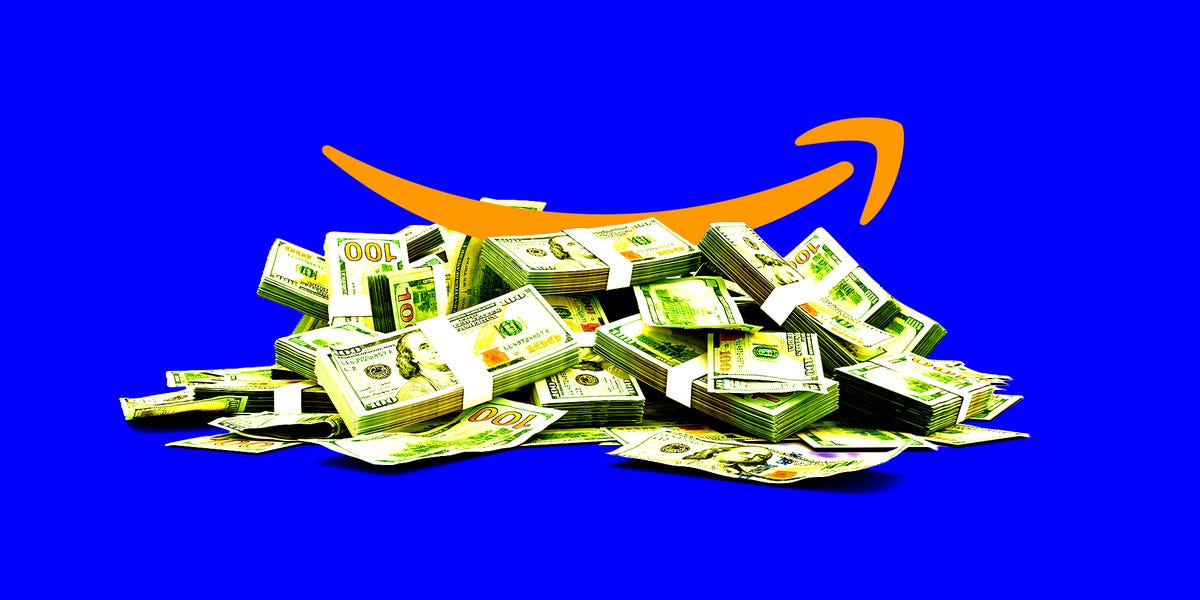Three months into launching ads, Amazon’s Prime Video is making a positive early impression with advertisers as it prepares to make its first big sales pitch, asking advertisers to make yearlong commitments during the upfront — TV’s biggest selling season of the year. TV ad sellers are scheduled to make their official pitches in May.
Business Insider spoke with five top TV ad buyers who asked for anonymity to discuss sensitive negotiations. Some buyers said they were already seeing positive results. One said a handful of advertisers tested the platform and saw a bump in sales on Amazon. Based on that early data, the buyer predicted Amazon could get as much as 15% of advertisers’ video budgets this year, which would rank it among the top connected TV ad sellers, YouTube and Hulu.
“I’ve seen enough positive trends that I’m more leaned in than I was originally,” the buyer said.
Notably, Amazon has budged a bit on the price of Prime Video ads, bringing its initial asks for $30 CPMs (or the cost to reach 1,000 people) down to more competitive rates for premium connected TV inventory from companies like YouTube, which can be around $25. Amazon has also over-delivered on advertisers’ reach goals with its initial campaigns, ad buyers said.
Wall Street thinks the ad offering will drive upward of $5 billion in revenue for Amazon, mostly from ads, as well as revenue from viewers who pay $3 a month to opt out of seeing ads. The consensus among advertisers is that traditional TV companies like Comcast and Disney stand to lose the most to Amazon. Ads for Etihad, Best Western, Samsung’s Galaxy, and Listerine were among those recently seen on the service.
Amazon is also staffing up for Prime Video sales teams, recently hiring ad veteran and former NBCUniversal sales exec Krishnan Bhatia as VP of global video advertising for Amazon Ads.
Advertisers’ initial reaction to Prime Video ads was mixed
Advertisers reacted with a mix of excitement and skepticism when Prime Video entered the TV ad market last year. With a large video audience, tons of information on what people buy, and an established ad sales operation, Amazon enabled advertisers to reach viewers who are now fragmented across multiple platforms like Disney, YouTube, and Netflix. Amazon estimated Prime Video ads would reach 115 million monthly viewers in the US.
Amazon’s timing wasn’t ideal as most ad budgets were already committed for 2023, though advertisers would unlikely commit big dollars to a brand-new platform anyway. Two of the buyers said Amazon also asked for CPMs of upwards of $30, more than twice what other streamers were charging for similar inventory.
But the skepticism was short-lived as Amazon set Prime Video up for success in several ways.
It offered big discounts to lure advertisers and ensure there were enough of them that viewers wouldn’t see the same ad over and over. The first buyer said they were offered 25% bonus ad impressions for certain first-time advertisers spending $200,000, which the buyer described as “definitely a strong incentive.” A second buyer noted Amazon was charging low adtech fees to manage ad campaigns, making it particularly competitive with YouTube.
Amazon made ads the default experience for viewers, which ensured it would have a big audience from the start. The promise of a sizable audience made it attractive to advertisers and meant that at least some saw their campaigns reach more impressions than promised.
Amazon is capping ads at three and a half minutes per hour, The Wall Street Journal reported, which is lower than all the other major streamers. It’s a way to limit audience pushback while appealing to advertisers who worry their ads will annoy viewers.
It’s also taking a page from the traditional TV playbook, with big sponsorships including product integration tied to ad-friendly programming like the new MrBeast reality TV show, “Beast Games.” Advertisers were told they have to spend at least $10 million to participate, the second buyer said.
Success isn’t a given for Amazon heading into the upfronts
As is typical of advertisers, some say Amazon’s prices are still too high and can be expected to use the soft ad market and competition to haggle. As an example, the second buyer said Amazon was asking advertisers to more than double their spending this year over last year to run on Prime Video, calling it “insane.”
Advertisers’ ads may get better sales results on Amazon if they create customized ads and monitor their performance, work that not all are prepared to do. Amazon will also have to start regularly sharing data showing advertisers how many people are actually watching Prime Video and for how long.
But advertisers agree Amazon is starting from a place of strength.
“I feel like they have a very strong seat at the table this year,” a third buyer said.




